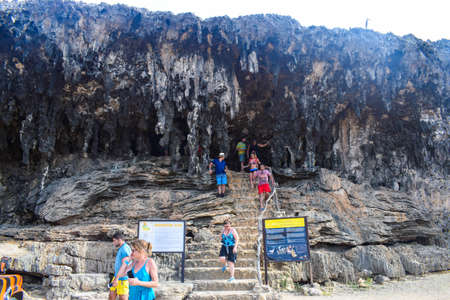Introduction to Offa’s Dyke Path
Nestled along the ancient boundary between England and Wales, the Offa’s Dyke Path is a long-distance walking trail steeped in history and natural beauty. This iconic route traces the remnants of Offa’s Dyke, an earthwork constructed in the 8th century by King Offa of Mercia, intended as a formidable demarcation line between his kingdom and the Welsh lands to the west. Today, this historic border has evolved into a celebrated National Trail that stretches for approximately 177 miles (285 kilometres), offering a unique journey through rolling hills, picturesque villages, and rugged countryside.
For those who lace up their boots and take on the path, the Offa’s Dyke offers more than just scenic vistas; it is a tangible link to centuries of Anglo-Welsh relations, blending legend, archaeology, and living landscape. The route’s enduring significance lies not only in its origins as a defensive structure but also in its role as a cultural crossroads—a place where English and Welsh heritage intertwine. Its appeal for walkers is broad: from seasoned ramblers seeking challenging terrain to history enthusiasts eager to trace the footsteps of medieval kings, the Offa’s Dyke Path promises an experience rich in discovery and local character.
2. Preparing for the Walk: Practical Tips and Essentials
Embarking on the Offa’s Dyke Path is both an adventure and a logistical challenge, so thorough preparation is essential. The trail covers roughly 177 miles (285 km), tracing the ancient boundary between England and Wales. To make the most of your journey, it’s wise to plan your route, pack appropriate kit, and anticipate the quirks of British weather.
Route Planning
Offa’s Dyke Path can be walked in either direction, from Sedbury Cliffs near Chepstow in the south to Prestatyn in the north (or vice versa). Most walkers allow 12–16 days to complete the entire route. Consider your daily walking distance, accommodation availability, and local transport links before finalising your itinerary. Booking accommodation in advance is advisable, especially during peak walking season (late spring to early autumn).
Sample Daily Distances and Accommodation Options
| Section | Miles per Day | Accommodation Type |
|---|---|---|
| Sedbury to Monmouth | 14 | B&Bs, Inns |
| Monmouth to Hay-on-Wye | 15–18 | Bunkhouses, Guesthouses |
| Hay-on-Wye to Knighton | 17–20 | Pubs with Rooms, Hostels |
| Knighton to Chirk | 12–16 | B&Bs, Hotels |
Essential Kit List
The right kit makes all the difference on a long-distance walk. Here’s a summary of essentials tailored for British conditions:
| Item | Details / Recommendations |
|---|---|
| Footwear | Sturdy, waterproof boots with good ankle support; well broken-in |
| Clothing Layers | Moisture-wicking base layers, insulating mid-layers, waterproof outer shell (jacket & trousers) |
| Navigation Tools | OS maps (Explorer 14, 201, 216), compass, GPS device or smartphone app with offline mapping |
| Packing System | Comfortable rucksack (30–40L), dry bags for valuables/clothing |
| Other Essentials | First aid kit, head torch, reusable water bottle, snacks/energy food, blister plasters, hat & gloves (even in summer) |
Navigating the Trail
The Offa’s Dyke Path is generally well signposted with acorn waymarks but don’t rely solely on markers—fog or overgrown sections can obscure signage. Carry physical OS maps or download digital versions before departure; phone signal is patchy in some rural areas. It’s also worth letting someone know your intended route each day.
The British Weather Factor
The weather along the Anglo-Welsh border is famously changeable. You may encounter drizzle, blazing sun, high winds and chill—all in one afternoon. Always check local forecasts (the Met Office app is reliable) and pack accordingly. Quick-drying clothes and waterproof gear are crucial. In exposed upland stretches like the Black Mountains or Clwydian Range, wind chill can catch out even seasoned walkers.
A Final Word on Readiness
Treat every stage as its own mini-expedition: plan carefully, respect the elements and travel light but prepared. With thoughtful preparation, you’ll be ready to enjoy every mile of this historic borderland trail.

3. Landscapes and Highlights Along the Route
The Offa’s Dyke Path is a captivating journey through some of Britain’s most evocative countryside, offering a rich tapestry of landscapes that shift with every step. Beginning in the gentle lowlands of the Severn Estuary near Chepstow, walkers are quickly introduced to rolling farmland dotted with ancient hedgerows—a quintessentially British sight. As you head northward, the terrain gradually transforms, revealing dramatic escarpments and lush river valleys. Particularly striking are the Black Mountains, where windswept moorland provides expansive views across both Wales and England.
Quintessential Countryside and Rural Charm
The path meanders through a patchwork of sheep-grazed fields and woodland glades, especially around Monmouthshire and Powys. Here, time seems to slow down amid dry stone walls and winding country lanes. In spring and summer, wildflowers burst into colour along the verges, while autumn brings a golden hush over the beech woods—an ever-changing palette that defines the British rural experience.
Notable Landmarks
No trek along Offa’s Dyke would be complete without pausing at some of its most iconic landmarks. The ruins of Tintern Abbey nestle serenely beside the Wye, evoking centuries of monastic history. Further north, Hay Bluff offers panoramic vistas beloved by walkers and writers alike. The iron age hillfort at Moel Arthur and the imposing Chirk Castle are reminders of the region’s turbulent past, each standing sentinel over their respective stretches of borderland.
Picturesque Villages
Charming villages punctuate the route, offering glimpses into daily life on the Anglo-Welsh divide. Places like Knighton—home to the Offa’s Dyke Centre—invite walkers to pause for a pint or a bite of hearty pub fare. Llangollen enchants with its canalside setting and historic steam railway, while Montgomery boasts cobbled streets and a castle perched above the rooftops. Each village tells its own story, woven into the broader narrative of borderland tradition.
In sum, traversing Offa’s Dyke Path is as much about soaking in these uniquely British landscapes and communities as it is about following an ancient boundary. Every mile reveals another facet of countryside character—at once familiar and ever surprising.
4. Cultural and Historical Insights
Walking the Offa’s Dyke Path is much more than a test of stamina—it is a journey through centuries of Anglo-Welsh culture, tradition, and living history. The path itself weaves together tales from ancient kingdoms, echoes of border skirmishes, and the everyday lives of people who have called this liminal region home for generations.
Exploring Stories and Local Customs
The communities dotted along the trail are proud custodians of unique customs and folklore. In places like Knighton or Llangollen, you may hear stories passed down through families about border reivers or legendary kings. It’s common to encounter bilingual signs, local accents blending Welsh lilt with English cadence, and traditional events such as Eisteddfodau—celebrations of poetry and music that have shaped regional identity for centuries.
Ancient Sites Along the Path
| Site | Location | Historical Significance |
|---|---|---|
| Offa’s Dyke Earthwork | Multiple Points | An 8th-century defensive earthwork marking the historic boundary ordered by King Offa of Mercia. |
| Castell Dinas Brân | Llangollen | Ruins of a medieval Welsh castle, offering panoramic views and deep connections to local legends. |
| Tintern Abbey | Near Chepstow | A Cistercian abbey founded in 1131, symbolising monastic influence along the borderlands. |
Living History: Insights from Local Communities
Conversations with locals reveal how history continues to inform daily life. Farmers recount generational ties to both sides of the border; innkeepers share tales of travellers who’ve walked the dyke over decades. The blending of traditions is evident in food—try Welsh cakes at a market in Monmouthshire or savour Herefordshire cider in a rural pub. These exchanges highlight how cultural heritage is not static but evolves with each new visitor who treads this ancient route.
5. British Walker’s Experience: Local Food, Accommodation, and Etiquette
Recommendations for Enjoying Traditional British Fare
One of the joys of traversing the Offa’s Dyke Path is sampling the varied and hearty fare found along the Anglo-Welsh border. Whether you’re stopping in a market town or a rural hamlet, you’ll encounter classic British comfort food—think piping hot Cornish pasties, Welsh rarebit, or a substantial ploughman’s lunch. Pubs are the heart of the local community, often serving homemade pies, locally sourced sausages with mash, and seasonal ciders or real ales from nearby breweries. Don’t miss out on afternoon tea in a traditional tearoom; a pot of strong English breakfast tea alongside scones with clotted cream and jam is an essential part of the experience.
Staying in Local Inns and B&Bs
Accommodation along the path ranges from rustic farm stays to historic coaching inns and homely bed-and-breakfasts (B&Bs). Booking ahead during peak walking season (spring to early autumn) is advisable, especially in smaller villages where options may be limited. Many B&B hosts are experienced in welcoming walkers and will happily provide drying rooms for wet boots and kit, hearty breakfasts, and packed lunches for your day’s trek. Staying locally not only supports rural economies but also offers insights into village life—don’t be surprised if your host shares stories about Offa’s Dyke or recommends a favourite local walk.
Walking Etiquette in Rural UK Settings
Respecting the Countryside Code
The UK countryside operates under a mutual respect ethos known as the Countryside Code. Always close gates behind you, keep dogs on leads near livestock, and stick to marked paths—even when crossing open fields. Litter should be taken home or disposed of responsibly; leaving no trace helps preserve these landscapes for future generations.
Engaging with Locals
A simple “Good morning!” goes a long way on rural footpaths, and friendly small talk with locals can yield invaluable advice about trail conditions or hidden gems off the beaten track. If passing through farmland or private property on public rights of way, maintain a respectful distance from homes and outbuildings.
Pacing Yourself
British walking culture values pacing and preparedness over bravado. Check weather forecasts before setting off—conditions can change rapidly—and carry waterproofs even on bright days. Stopping at a pub for lunch or mid-afternoon pint is not just accepted but encouraged as part of enjoying the journey rather than rushing to the destination.
Summary
Embracing traditional food, local stays, and good walking manners ensures an authentic experience along Offa’s Dyke Path. The route is as much about cultural immersion as it is about landscape—a place where hospitality and heritage go hand in hand with each step across this storied borderland.
6. Challenges, Rewards, and Reflections
Walking the Offa’s Dyke Path is not simply a matter of putting one foot in front of the other—it is an ever-shifting blend of physical exertion, mental stamina, and emotional engagement. The undulating terrain, unpredictable British weather, and occasional navigational quirks can test even the most seasoned rambler. I found that certain ascents—such as those above Knighton or Chirk Castle—left my legs aching and breath short, especially after a long day’s march. Yet these physical challenges brought with them a sense of accomplishment that lingered long after the fatigue had faded.
The camaraderie among fellow walkers proved to be one of the trail’s unexpected joys. Whether sharing route tips over a pint in a cosy pub or swapping stories at a remote bothy, there was a tangible sense of community on the path. We were all bound by the same goal: to trace this ancient border from end to end. Small acts of kindness—a shared packet of biscuits, encouragement during a downpour—reminded me how shared hardship can foster genuine connections.
Perhaps most rewarding of all was the opportunity for personal reflection. Traversing landscapes steeped in history, from mossy woodlands to windswept ridges, gave me time to consider not just Offa’s legacy but also my own motivations for walking. The solitude between villages offered moments of rare clarity; standing atop the Black Mountains, looking out across two countries, I felt both small and profoundly connected to something greater.
Completing the Offa’s Dyke Path is far more than ticking off miles on a map—it is an immersion into landscape, history, and culture that rewards persistence with perspective. My boots may have been muddied and my muscles sore by journey’s end, but I carried home a deeper appreciation for both the borderlands and those who traverse them alongside me.


